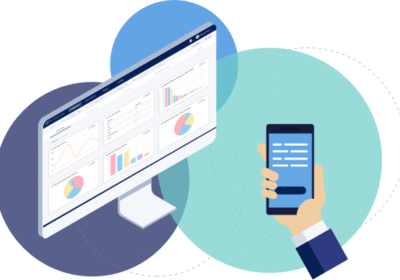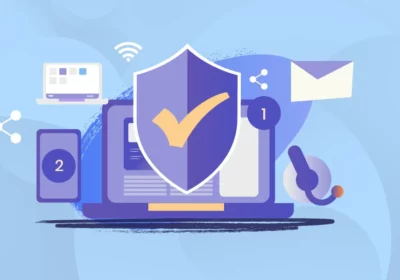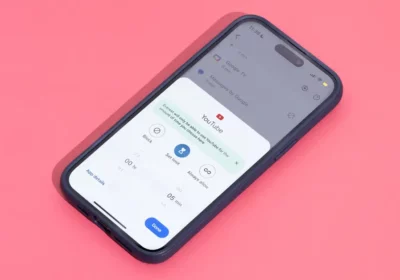In today’s digital age, children have unprecedented access to the internet, which can be both a source of knowledge and entertainment as well as a potential risk. To ensure your child’s online safety and promote responsible internet use, monitoring their online activities is crucial. This comprehensive guide will help you understand the importance of monitoring your child’s internet usage and provide you with tools and strategies to do so effectively and responsibly.
Why Monitor Your Child’s Internet Usage?
The internet is a vast and often unpredictable space, and while it offers numerous educational and recreational opportunities, it can also expose children to various risks. Here are some compelling reasons to monitor your child’s internet usage:
- Online Safety: The internet is not always a safe place. There is potential for exposure to inappropriate content, cyberbullying, online predators, and scams. Monitoring helps protect your child from these dangers.
- Time Management: Excessive screen time can have adverse effects on a child’s physical and mental health. Monitoring helps ensure a balanced lifestyle with adequate time for other activities.
- Educational Guidance: By monitoring your child’s online activities, you can guide them toward educational content and appropriate online resources that can enhance their learning.
- Responsible Internet Use: Monitoring fosters responsible internet use and teaches children about the potential consequences of their online actions.
Best Practices for Monitoring Your Child’s Internet Usage:
While monitoring your child’s online activities is essential, it should be done in a way that respects their privacy and encourages open communication. Here are some best practices:
- Open and Honest Communication:
- Start by having an open and honest conversation with your child about the reasons for monitoring. Explain that it’s not about mistrust but about ensuring their safety.
- Set Age-Appropriate Boundaries:
- Establish age-appropriate boundaries for internet use, content access, and screen time. Make sure your child understands and agrees to these rules.
- Choose the Right Time:
- Introduce monitoring when your child is old enough to understand its purpose. Younger children may need stricter rules, while older teenagers may require more trust and responsibility.
- Be Transparent:
- Ensure that your child knows you are monitoring their online activities. Transparency fosters trust and encourages responsible behavior.
- Respect Privacy:
- While monitoring is essential, respect your child’s privacy to a reasonable extent. Avoid invading their personal conversations or reading their private diaries. Focus on their safety and well-being.
- Balance Screen Time:
- Use monitoring tools to manage and balance your child’s screen time. Encourage them to engage in offline activities, like sports, hobbies, and family time.
- Stay Informed:
- Regularly check and update the monitoring tools you use. Familiarize yourself with the latest apps and websites that your child may access.
- Set Appropriate Boundaries:
- Establish boundaries for internet use, including what kind of content is acceptable and which apps or websites are off-limits. Keep these boundaries age-appropriate.
Tools for Monitoring Your Child’s Internet Usage:
Several tools and software are available to help you monitor your child’s internet usage effectively. Here are some popular options:
- Parental Control Software:
- Parental control software offers a range of features, including content filtering, time management, and monitoring of web and app usage. Examples include Norton Family, Qustodio, and Net Nanny.
- Router-Based Controls:
- Some routers have built-in parental control features that allow you to manage internet access for all devices connected to your home network.
- Built-In Operating System Controls:
- Both iOS and Android operating systems offer built-in parental controls that allow you to restrict app usage, set screen time limits, and monitor device activity.
- Browser Extensions:
- Browser extensions like “WebFilter” and “BlockSite” can help you filter and block specific websites and content.
- DNS Filtering Services:
- DNS filtering services like “OpenDNS” can be configured at the network level to block inappropriate content.
- App-Based Monitoring:
- Some apps like “Family Link” by Google and “Screen Time” by Apple provide monitoring and time management features for your child’s device.
Features of Internet Monitoring Tools:
Different internet monitoring tools offer various features to help you track and manage your child’s online activities. Here are some common features to look for:
- Content Filtering:
- Content filtering allows you to block or restrict access to specific websites or content categories that are not suitable for your child’s age.
- Time Management:
- Time management features enable you to set daily or weekly screen time limits, ensuring that your child doesn’t spend excessive time online.
- Web and App Usage Tracking:
- These features provide insights into which websites and applications your child is using, allowing you to identify potential concerns.
- Social Media Monitoring:
- Social media monitoring helps you track your child’s interactions on platforms like Facebook, Instagram, and Twitter.
- Geofencing:
- Geofencing allows you to set geographical boundaries. You’ll receive alerts if your child leaves or enters these predefined areas.
- Location Tracking:
- Location tracking features provide real-time information about your child’s whereabouts, offering peace of mind and security.
- Instant Alerts:
- Instant alerts notify you of specific events, such as the use of blocked websites or potential concerns in text messages.
- App Blocking:
- App blocking features allow you to prevent your child from using specific apps that you find inappropriate.
Internet Monitoring for Different Age Groups:
Effective internet monitoring can vary depending on your child’s age and level of digital maturity. Here’s how to adapt monitoring for different age groups:
- Young Children (Under 8):
- For younger children, it’s crucial to have strict rules and content filtering to protect them from inappropriate material. Use simple, child-friendly monitoring tools.
- Preteens (8-12):
- Preteens can begin to learn responsible internet use. Use content filtering, time limits, and basic monitoring tools. Encourage them to ask questions about what they encounter online.
- Teenagers (13 and Older):
- Teenagers should have more trust and responsibility. Discuss the purpose of monitoring, involve them in setting boundaries, and use advanced monitoring tools that align with their age and maturity.
Challenges and Considerations:
Monitoring your child’s internet usage is not without its challenges and considerations. Here are a few to keep in mind:
- Respect and Trust:
- Balancing monitoring with respect and trust can be challenging. It’s essential to communicate the reasons for monitoring and maintain an open dialogue with your child.
- Adaptability:
- As your child grows and their online behavior evolves, your monitoring approach may need to adapt. Stay informed about the latest trends and technologies.
- Privacy Concerns:
- Be aware of potential privacy concerns and the implications of collecting and storing your child’s online activity data. Make sure to use reputable monitoring tools with strong privacy safeguards.
- Consistency:
- Consistency in enforcing monitoring rules is crucial. Ensure that the rules are consistently applied and enforced.
- Balance:
- Striking the right balance between online and offline activities is challenging. Encourage your child to participate in real-world experiences and maintain a healthy balance.
Conclusion:
Monitoring your child’s internet usage is an essential aspect of modern parenting. It helps ensure their online safety, encourages responsible internet use, and fosters open communication. By employing the right tools and strategies, you can create a safe online environment for your child and empower them to make informed choices in the digital world. Remember that your monitoring approach should be flexible and adapt as your child grows and gains more independence.



